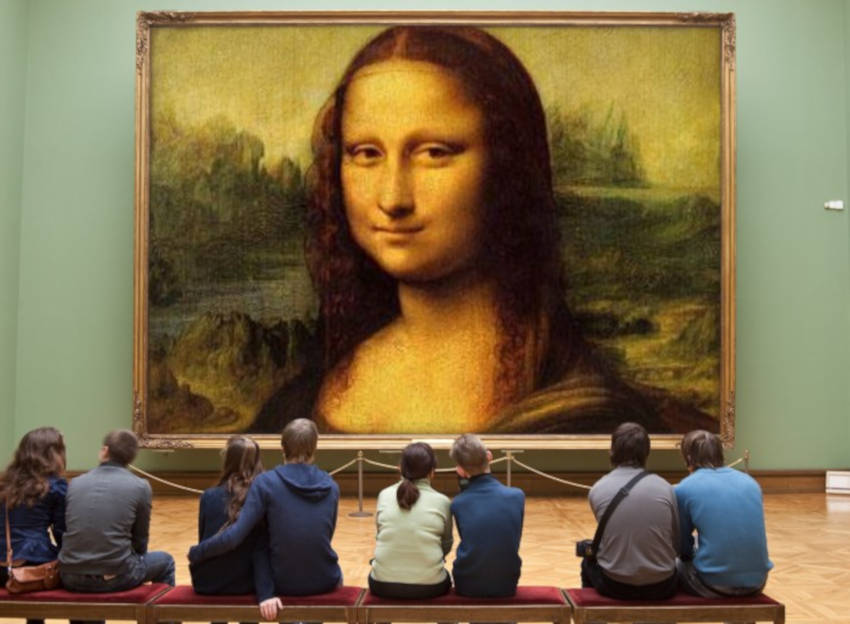This is a really fascinating alternative investment idea that certainly can make sense to have in a well diversified portfolio. Thanks for sharing!

Ask any successful investor not named Warren Buffett their secrets for minimizing risk, and they will tell you it’s diversification. Not putting all your eggs in one basket is essential for preserving both your wealth and your sanity.
Whenever I pack for a trip abroad, for example, I always make sure I have clothes spread out on multiple suitcases. This way, I don’t end up half-naked when one of them gets lost or stolen at the airport.
With the S&P 500 close to an all-time high, many affluent investors are seeking alternative investments not correlated with the stock market, including real estate, commodities, and precious metals.
But nothing is more fascinating than investing in blue-chip artworks.
Being a big admirer of many renowned oil paintings myself— none of which I can afford— I think it’s a great idea that Masterworks is bringing this opportunity to the masses.
About Masterworks

Founded by Scott Lynn in 2017, Masterworks.io is the first company to allow investors to buy shares of great masterpieces by artists like Picasso, Monet, and Warhol. The New York City-based company is making it possible for everyone to invest in artworks made by blue-chip artists.
I’ve personally met and spoken with Scott at FinCon 2019 in Washington D.C. and was quite impressed with his vision and message— democratize fine arts!
His company lets the average Joe, like you and me, invest in “investment-grade” artwork— many of them historical masterpieces— that are otherwise only accessible by the ultra-rich who often remove them from public display.
Masterworks provides a fine art investment platform that will allow anyone to invest in specific works of art online. All offerings will be filed with the Securities and Exchange Commission.
Scott Lynn is a serial tech entrepreneur who has founded, acquired, or acted as a majority-investor in over a dozen advertising technology, content, and fin-tech companies. Scott himself is an avid art collector of contemporary art for over fifteen years.
Outside of his technology start-ups, he’s made higher returns investing in arts than anything else. For example, he acquired a 1975–76 painting by Willem de Kooning for $7,400,000. Two years later he sold the same painting for $13,500,000 in gross proceeds!
Related: Art Ability | Overcoming Disability Through Art
How it works
The fine art investment process goes like this:
Selection: Masterworks selects paintings based on a review of sales data for similar works with historical appreciation rates between 9-15% and attempts to buy them below fair market value through auction guarantee strategies and established auction house relationships.
SEC Filing: After purchasing a painting, they file an offering circular with the Securities and Exchange Commission and respond to SEC comments to qualify the offering. Any costs or fees will be disclosed in this step.
Public Offering: Once the offering passes SEC and FINRA review, investors will be able to buy shares for $20 per share. Warhol’s 1 Colored Marilyn, for example, has 99,825 shares on offer.
Transparency: Analytics and big data are used to bring transparency to one of the world’s largest unregulated markets by publishing timely content.
Liquidation: The expected holding period for each painting is five to ten years. But, at any time, if a collector offers to buy a painting that you’ve invested in, all shareholders have a vote to sell or not. Should the majority of shareholders decide to sell, the painting will be liquidated and sold. Investors get the share of the net proceeds, if any, after the costs are deducted.
The plan is to eventually be able to offer trading or sales of shares through brokerage relationships. But the company makes no assurance that it will become a reality in the next 12-months.
How blue-chip art outperforms the S&P 500
Inspired by the stock market, blue-chip artworks are masterpieces expected to appreciate, regardless of general economic conditions. They are known for their high resale value.
The Artprice 100 is a market index that lists the 100 top-performing artists at auction within the last five years. The composition of the index in 2017 includes household names like Pablo Picasso (#1), Andy Warhol (#2), Claude Monet (#6).
This particular segment of the art market has seen incredible value accretion since 2000, outperforming the S&P 500 by over 250%.
In fact, the index returned 10.6% when the S&P 500 fell 5.1% in 2018!
Risk vs Reward
Like any other investment, buying shares of blue-chip artwork through Masterworks doesn’t come without any risks. For one thing, this is a highly illiquid investment. Don’t invest money you’ll need within the next eight to ten years.
And then there’s the hedgefund-like fee structure:
You’ll pay a 1.5% annual management fee, which covers insurance, storage, and transportation. Hedge funds typically charge 2%.
Masterworks will keep 20% of any profit made from the sale of a piece. That may seem a lot, but it does provide some assurance that Masterworks intends to purchase artworks that will substantially appreciate in value.
See also: Joney Talks interview Scott Lyn at FinCon
Investing with Masterworks does come with the following advantages:
- High potential reward: Paintings by renowned artists appreciate greatly over time. It consistently outperforms the stock market.
- Little risk of losing your principal: Masterworks uses its own capital to buy the paintings. They’ll use their expertise to select artists who have optimal risk-reward profiles. All paintings are fully insured.
- Hedge against inflation and currency devaluation: Art is a great store of value. It has zero correlation to financial markets.
- Invest in something that you enjoy: Masterworks provides an exclusive members-only gallery in SoHo, New York.

Final thoughts
Given the high potential reward, blue-chip artworks certainly can have a place in your portfolio provided it’s a small percentage (i.e., single-digit allocation).
Not everyone appreciates fine arts, but rich people do. It’s funny how my neighbor cringed when my wife told her we bought a $700 oil-painting at a local gallery. And yet they call their new car “an investment.”
I bet our painting will become more valuable than their car in less than a decade.
After all, fine arts make fine investments.






